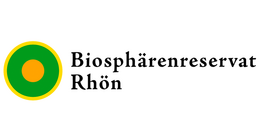Forest Decline in Franconia
The impact of the 2018-2019 tree die-off in Bavaria on forest resilience and biodiversity

Description
In Germany, during the dry summers of 2018 and 2019, tree mortality was observed on more than 200,000 hectares of forested areas. A particular hotspot was the forests of Franconia, where the mortality of tree species previously considered robust to climate change, such as European beech (Fagus sylvatica L.) and Scots pine (Pinus sylvestris L.), was also observed. In the face of increasing tree mortality, questions of forest resilience are gaining significance. Resilience describes the ability of ecosystems to recover after a disturbance and return to a state functionally equivalent to the situation before the disturbance. However, altered environmental conditions can lead to the resilience of an ecosystem being exceeded, resulting in profound changes in ecological structures and processes, which in turn can have profound effects on species composition. Although questions of resilience are increasingly discussed in ecology, it is currently unclear whether large-scale tree mortality events like those of 2018/19 in Central Europe pose a problem for ecosystem resilience (e.g., forests regenerating poorly), or whether the affected forests can recover sufficiently quickly. Furthermore, it is unclear how extensive tree mortality affects biodiversity, as disturbances in the forest can have both positive and negative effects on species groups particularly affected by biodiversity loss (e.g., insects, Seibold et al. 2019).
Objectives
(1) What is the resilience of forest areas in Bavaria affected by mortality in the years 2018/19?
Through field surveys, the regeneration status of disturbed areas (number of stems, tree species, size distribution, possible damage to regeneration) and their context (e.g., microsite, ground vegetation, light availability, distance to the nearest seed tree) will be assessed.
(2) Did tree mortality in 2018/19 have negative or positive effects on biodiversity?
On the selected sample plots, tree species diversity and the structural diversity of the forest will be recorded. In addition, the diversity of insects will be determined using three complementary trap types (Barber traps, Malaise traps, window traps). These three trap types cover a wide range of taxa, including indicator groups important for conservation such as saproxylic beetles, butterflies, wild bees, ground beetles, as well as functionally important groups such as parasitoids, phytophagous species, and predators.
Duration
2021-2024
Funded by
StMUV







